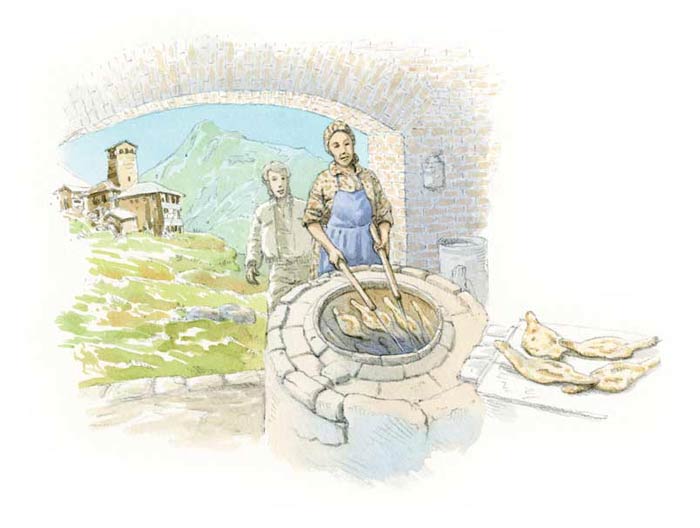Shoti

Form: Shaped like a skiff or canoe
Country of origin: Georgia
What distinguishes it from other methods of bread making: Flat bread folded to give it the shape of a canoe
Category of bread: (2) Even if it looks like it’s going to take off to sea, shoti is categorized as a flat bread
Particularity: Cooked in a tone, an oven in the shape of a well
Ingredients: Wheat flour; leaven or yeast; water; salt

Georgia
Georgia has always been a land of wheat. There are varieties of wheat listed in Georgia that don’t grow anywhere else on earth, and everything points to the fact that this land is one of the very birthplaces of this king of all cereals. It was not without reason that when Jason and the Argonauts set off on their mythical voyage to recover the Golden Fleece, they headed toward ancient Colchis, what is modern-day Georgia.
In our history books, the Golden Fleece in question is that of a ram. Pelias, the king of Iolcos, who divested Eson, the father of Jason, of his throne, demands this Fleece in exchange for restitution of the throne. With the help of the goddesses Athena and Hera, Jason, surrounded by Argonauts (because they first boarded the Argo, the “fast” ship) manages to surmount all the trials and bring back the Golden Fleece. This makes for a good story, showing first and foremost the Greeks’ need to go in search of wheat, which was so difficult to grow in Attica, and to go to a place where they were sure to find it. Might the Golden Fleece have actually been the a golden field of wheat in Georgia?
Preparation of shoti is the same as for all the flat breads found on the Mediterranean periphery. A wheat flour and water dough is rolled out, sprinkled with leaven (and today, yeast) to form an elongated lozenge (50 cm), which is made to look like a skiff. Was this perhaps in memory of Jason and the Argonauts’ odyssey on the Argo? We have no proof of that, but nothing keeps us from thinking it might be true. This diamond-shaped dough is then thrown onto the walls of the well-shaped terra cotta tone.

